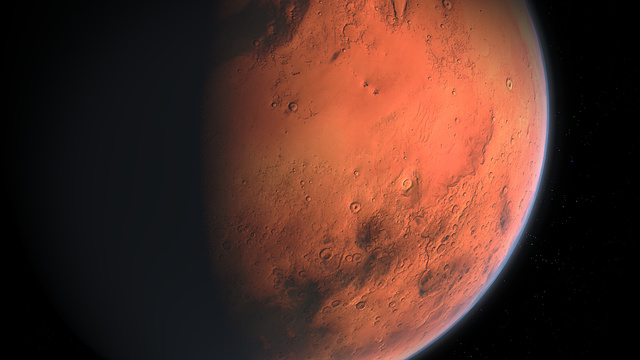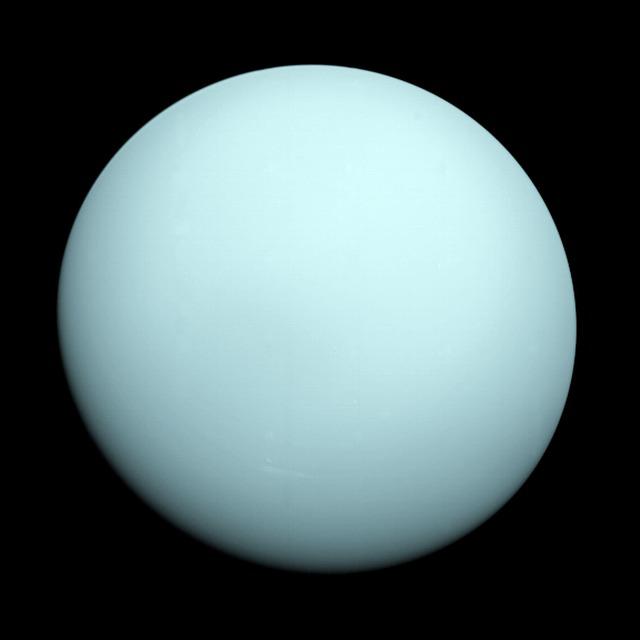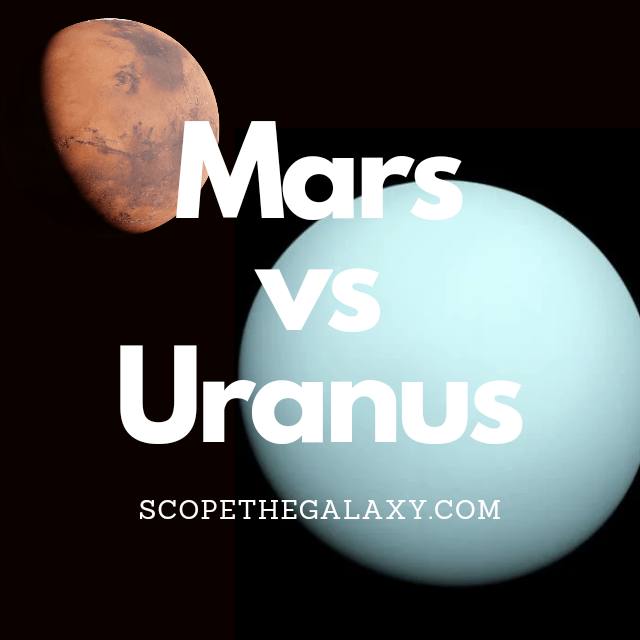*This post may contain affiliate links. This means we may make a commission if you purchase an item using one of our links*
The main differences between Mars and Uranus is that Mars is a terrestrial planet whilst Uranus is an ice giant, Mars has 2 moons whilst Uranus has 27 moons, Mars is the 4th farthest planet from the Sun whilst Uranus is the 7th farthest planet, Uranus has an axial tilt of 98 degrees as opposed to Mars’ 25 degrees and Uranus is over 6 times bigger than Mars in diameter.
Although these are the main core differences between the two, there are a variety of other features that differentiate the Uranus and Mars, so continue reading if you want to learn more about these differences.
What Is The Planet Mars?
Table of Contents

Mars, also known as the red planet and the celestial object that’s the front runner in our entire solar system to become a possible new home for us if terraformed. It is also the 4th farthest planet from the Sun and is one of 4 main line
terrestrial planets (not including Pluto) in our solar system.
This means that one year on Mars will take roughly 687 Earth days and a day on Mars is roughly the same as Earth at 24 hours and 37 minutes. It’s axial tilt is also very similar to that of Earth where it is positioned around 25 degrees to the right
It may not be the largest terrestrial world in our solar system as its diameter is only 6,779km but, it does have the most moons amongst the normal terrestrial planets here where two, namely Deimos and Phobos are currently orbiting the red planet.
Like Earth and the other terrestrial worlds, Mars does have an atmosphere, certainly more visible than that on Mercury but, when compared to Earth’s it is merely 1% of the volume on our home planet.
As a result it is more susceptible to larger debris striking its surface and is unable to trap in too much heat either. This is why it’s on the colder side with a temperature of around -65 degrees Celsius on average. On the contrary its core is significantly hotter at 1,350 degrees Celsius.
Mars is probably the most explored planet outside of our own, with a multitude of rovers like Sojourner (1997–1997), Opportunity (2004–2018), Spirit (2004–2010), Curiosity (2012–), and Perseverance (2021–) that have landed on the Martian soil to explore it.
Billionaires like Elon Musk and even Jeff Bezos are trying for an opportunity to genuinely have astronauts land on the Martian soil, possibly as early as 2029 so, Mars clearly has a lot interested in its terrain, as a potential substitute for Earth in the future.
What Is The Planet Uranus?

Uranus is the 7th farthest planet from the Sun and the 3rd largest planet in our solar system, coming in at a diameter of 50,724 km. This means that roughly 63 Earth’s could fit inside this ice giant.
In regards to why this cyan blue planet is referred to as an ice giant, it’s down to it’s composition. Uranus is made mostly of methane, ammonia and water with its atmosphere mostly consisting of hydrogen and helium, much like the Sun, and the other giant planets in our solar system.
Due to its distance from the Sun, it takes Uranus 84 years to complete one orbit our central star, whereas it’s axial rotation is much faster than even our Earth at 17 hours per rotation.
As a result of its distance from the Sun, ice based composition and faster rotation levels, Uranus is far from an ideal place to live in let alone have the potential to support life.
Its base temperature is generally a chilling -190 to -200 degrees Celsius and its rocky core, although hot, is still on the cooler side for a large planet sitting around the 5,000 degrees Celsius range.
The planet’s winds are also very fast often hitting 900 km/h, which is roughly twice that of Earth’s most powerful turbulent wind speeds.
In regards to the moons surrounding this cyan planet, we’ve discovered 27 small ones orbiting it. Furthermore, it has 13 rings surrounding it which also means Uranus has the most abundant collection of rings surrounding in our solar system, which is even more than Saturn.
One of the Uranus’ most unique features would include the manner in which it rotates around its axis. As opposed to the slightly angled rotation that the likes of Earth, Saturn and most other planets display, Uranus’ axis is positioned at a 98 degree angle.
What this means is this ice giant completes an axial rotation on its side as opposed to the relatively up straight positioning of most of the other planets in our solar system.
How Are Mars And Uranus Similar?
Although Uranus and Mars don’t share too many similar features, they still share a few commonalities, which in this case includes the following:
- Both planets are orbit the Sun in a circular pattern.
- Both have a hotter central core.
- Both are a spherical in shape.
- Both have multiple moons orbiting them.
Differences Between Mars And Uranus
In regards to the differences between Mars and Uranus, they include the following:
- Mars is a terrestrial planet whereas Uranus is a gas based ice giant.
- Mars is composed of iron, nickel, and sulfur whereas Uranus consists of water, methane, and ammonia fluids with its atmosphere composed of hydrogen and helium.
- Mars is red in color whilst Uranus is cyan blue.
- Uranus is much bigger than Mars where its diameter is 50,724km compared to Mars’ 6,779km.
- Mars has 2 Moons whilst Uranus has 27 moons
- Uranus’ axial tilt of 98 degrees means it rotates practically on its side whereas Mars has a more normal axial tilt of 25 degrees.
- As for how long a day lasts on each planet, it takes Mars 24 hours and 37 minutes whereas Uranus completes a day in 17 hours.
- Mars is the warmer of the two planets with a temperature of -67 degrees Celsius compared to that on Uranus which is -190 to -200 degrees Celsius.
- Mars is the 4th farthest planet from the Sun whereas Uranus is the 7th Farthest. As a result it takes Mars 687 days to orbit the Sun and Uranus 84 years to complete one cycle.
- Uranus has 13 Rings surrounding it whilst Mars has 0.
- Uranus is the heavier of the two with a mass of 8.681 × 10^25 kg whilst Mars has a mass of 6.39 × 10^23 kg.
- Uranus’ core is hotter than that in the middle of Mars where it is 5,000 degrees as opposed to Mars’ that is 1,350 degrees Celsius.
- Mars is more dense where it is 3.93 g/cm³ whilst Uranus has a density of 1.27 g/cm³.
- Mars has a gravitational strength of 3.721 m/s² whereas Uranus’ gravity is 8.87 m/s².
Summary
Both planets are very different from one another, whether it be their size, temperature, gravitational and magnetic field strengths, their overall composition and so on.
Therefore, despite the odd few similarities Mars and Uranus may share, they are still are very distinct entities that function uniquely from one another.

